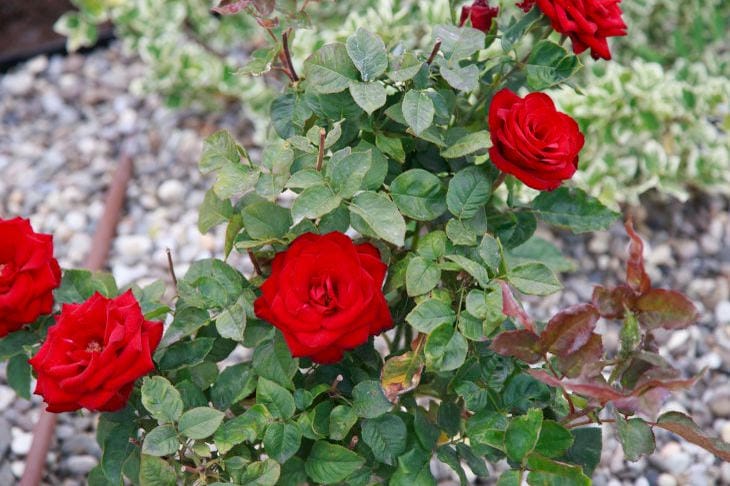October becomes a crucial month for preparing roses for winter.
Proper organization of measures to protect plants from cold weather determines their successful wintering and lush flowering in the next season.
Preliminary soil treatment
The condition of the soil around the rose bush plays an important role in the wintering of the plant. Loosening, weeding and mulching help maintain an optimal water balance.
The application of phosphorus-potassium fertilizers strengthens the root system before winter.
Trimming bushes
Proper pruning of bushes is the most important stage of preparation.

Removing weak, diseased and damaged shoots prevents the development of diseases under winter shelter. The height of pruning depends on the rose variety and climate zone.
Disease prevention
Treating plants with fungicides protects them from fungal diseases during the winter period.
Spraying with copper-containing preparations strengthens the immunity of roses. Removing fallen leaves prevents the spread of infections.
Hilling up bushes
Creating a mound of earth around the base of the bush protects the root collar from freezing. The height of the mound should be 25-30 centimeters.
Using loose soil promotes better air permeability.
Preparation of covering material
The choice of materials for shelter depends on the climatic conditions of the region.
Non-woven material, spruce branches, dry leaves are traditional protection options. The air-dry method of covering is considered the most effective.
Construction of the frame
Creating a reliable frame prevents damage to bushes under the weight of snow.
The arcs or pegs are installed in such a way that the covering material does not touch the plants. The robust structure can withstand heavy snowfalls.
Proper shelter
The process of covering roses begins after the onset of persistent frosts.
The gradual covering allows the plants to adapt to changing conditions. It is important to provide ventilation under the cover to prevent damping off.
Features of caring for climbing roses
Climbing roses require a special approach when preparing for winter.
Removing the vines from the supports, carefully rolling up the shoots and laying them on the prepared base precedes covering. Protecting the grafting point is a priority.
Protection of standard roses
Standard roses need careful protection from frost. Bending the trunks to the ground requires special care.
The grafting site is additionally insulated. The crown is covered separately after bending.
Humidity control
Maintaining an optimal level of soil moisture in the fall affects the success of wintering.
Moisture-charging irrigation is carried out before frost sets in. Excessive moisture under cover can lead to damping off of plants.
Temperature monitoring
Monitoring the air temperature helps determine the optimal time for covering. Early covering can harm roses just as much as late covering.
A thermometer installed under the shelter allows you to monitor wintering conditions.
Additional protective measures
Installation of wind protection screens, snow retention, and additional shelter during severe frosts are important protective measures.
Regular inspection of shelters allows for timely repair of damage.








